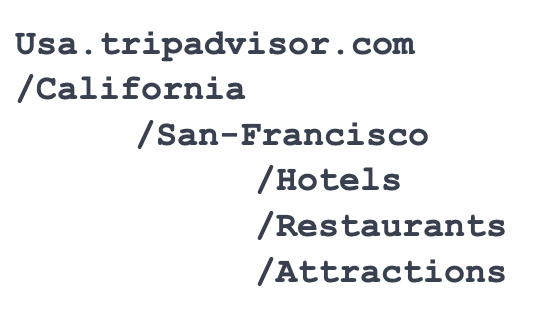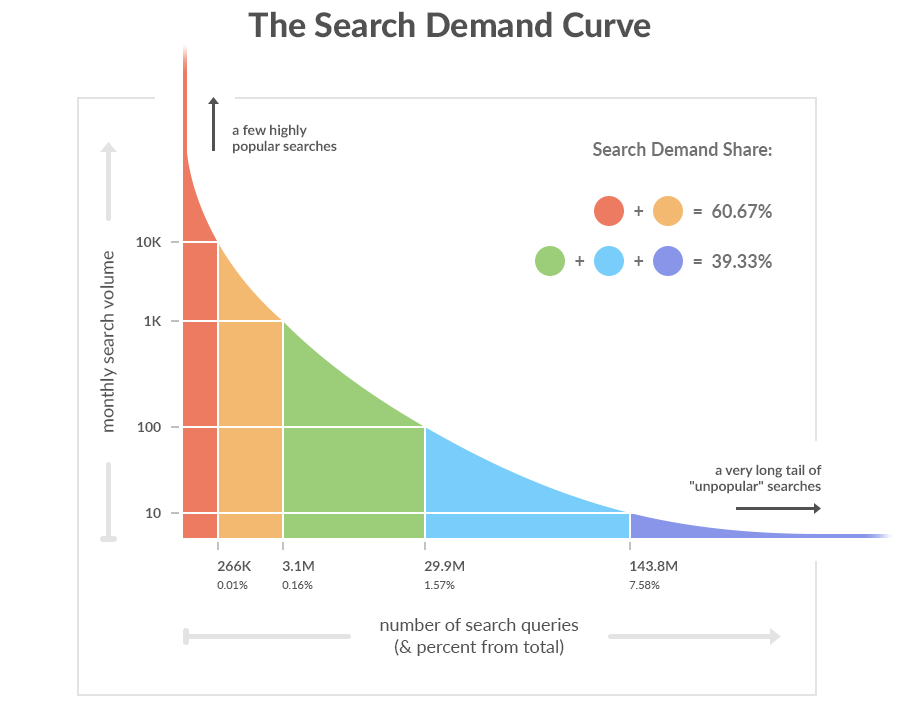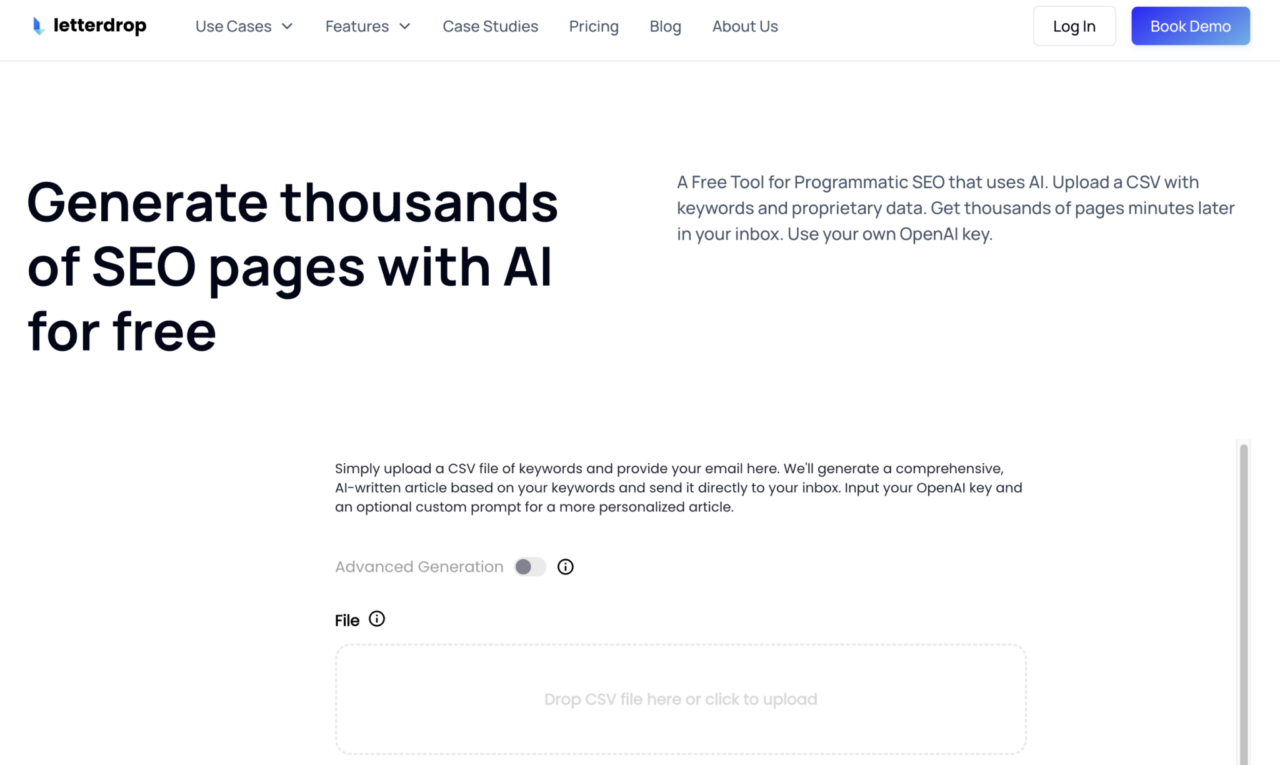Staying ahead of the curve with SEO is crucial in today’s world, especially with how inundated the internet is with AI content. However, one strategy that has time and time again proven quite effective programmatic SEO. While the concept itself isn’t new, the methods and tools used to implement it have seen significant advancements.
In this post, we’ll walk through how to scale your content creation to the next level, illustrated by some programmatic SEO examples.
What Is Programmatic SEO?
Programmatic SEO is a method of automating the creation of multiple search engine optimized web pages based on templates and keyword research. These pages are generally designed to target middle-of-the-funnel and bottom-of-the-funnel queries, which have higher intent and are more likely to drive conversions.
The core components of programmatic SEO include:
- Keyword Research: Identifying a list of long-tail keywords that have high search intent but lower competition. These keywords form the basis of the web pages to be created.
- Template Creation: Designing a standard layout or template for these web pages. This template will have placeholders for content, metadata, images and other SEO elements.
- Content Generation: Populating the template with relevant content. This could be done manually, but increasingly AI tools like ChatGPT are being used to automate this process.
- SEO: Ensuring that the generated pages are fully optimized for search engines. This includes meta descriptions, title tags, header tags, and internal linking strategies.
- Monitoring and Analysis: Once the pages are live, their performance is monitored using analytics tools. Insights from this data are then used to refine the strategy further.
For instance, platforms like TripAdvisor, Yelp and Expedia use programmatic SEO to create city-based directories for hotels, restaurants, and sightseeing spots. These directories are often subdomains or subdirectories that are organized by country and city, making it easier for users to find what they’re looking for.
If we continue with the hypothetical example of TripAdvisor for a minute, it may have a subdomain for the United States, with subdirectories for each state, further divided into cities, and then into categories like hotels, restaurants, and tourist attractions. Here’s how it might look:

Each of the above pages is a programmatic SEO example, in this case. They are generated based on templates and populated with content that is highly relevant to specific search queries like “best hotels in San Francisco” or “top attractions in California.”
Here’s another way of looking at it programmatic landing pages:

When content is organized into easily navigable subdomains and subdirectories, users can find the information they’re seeking much easier, especially when the destination site makes it easier for search engines like Google to correlate the searcher’s query with the content of the site.
This ease of use can significantly improve user engagement metrics like time on site and bounce rate, which, as you might guess, can substantially impact SEO for the better!
Why Programmatic SEO Matters Now
Let’s be clear. Programmatic SEO has always mattered, but it’s not until lately that it’s carried increasingly more weight in people’s minds.
Scarcity of Real Estate
The digital arena, as we know it, is getting more cutthroat. Brands are migrating more of their business development dollars over to refining and optimizing their website. And the more businesses that do this means that the space they’re competing in is getting more and more crowded.
To that end, brands are forced to be more clever, which is what leads them to exhaust every conceivable option available to them in order to edge out their competitors. That includes programmatic SEO. Those with stronger domain authority have a distinct advantage, which is why improving programmatic SEO is becoming more of a commonplace principle in the minds of many technical-minded marketers.
The Long-Tail Impact
While long-tail keywords are iconically known for not bringing in a large number of visitors individually, their cumulative impact can be substantial. This is where studying programmatic SEO examples and implementing them yourself can be very effective!
Businesses that automate the creation of pages targeting these longer-tail queries can tap into a wider, yet still relevant audience.
The long-tail strategy is particularly advantageous for businesses with established domain authority. High domain authority not only boosts the website’s credibility but also its ability to rank for a multitude of keywords. When a website with strong domain authority uses programmatic SEO, it essentially creates a snowball effect.
Each new page that targets a long-tail keyword has a higher likelihood of ranking well in search engine results.
Over time, as these pages accumulate, the website begins to dominate the search engine real estate for a wide array of keywords, thereby driving a consistent and diversified stream of organic traffic.
Moreover, long-tail keywords often indicate a higher level of user intent compared to more generic queries:

For example, a user searching for “best noise-cancelling headphones under $200” is likely closer to making a purchase than someone who simply searches for “headphones.”
By targeting these specific, intent-rich queries, programmatic SEO not only increases traffic but also improves the quality of that traffic. This leads to higher conversion rates, as visitors arriving through these targeted pages are more likely to take desired actions, such as making a purchase or signing up for a newsletter.
The Role of AI and Automation in Programmatic SEO
The rapid development and popularization of generative AI technologies like ChatGPT and Google Gemini have made it easier to generate content for these programmatic SEO pages.
For example, a page about “best pizza places in Milan, Italy” could be populated with content generated by AI, which can pull data from existing reviews and rankings. This is particularly useful for evergreen topics where the information doesn’t change that frequently.
You can use a tool called LetterDrop, a free programmatic SEO page tool, to help you with this by creating dozens of page iterations modeling specific keywords:

It’s a shining example of the benefits that become of marrying modern AI functionalities with SEO at scale.
You may also like: Programmatic SEO for Ecommerce: Scale Your Online Store Fast
Last Thoughts on Our Programmatic SEO Examples
While programmatic SEO is not a brand new concept, its implementation has evolved over the years, thanks in part to advancements in AI and automation.
As the digital playing field grows more competitive, leveraging programmatic SEO can offer businesses a significant advantage. If you can grasp its nuances and keep an eye on future trends, you, as the marketing leader for your brand, can refine and amplify the potency of your SEO efforts.
So, are you ready to dive into the world of programmatic SEO?
If you’re ready to level up your business with data-driven automation, Single Grain’s programmatic SEO experts can help!👇
For more insights and lessons about marketing, check out our Marketing School podcast on YouTube.



